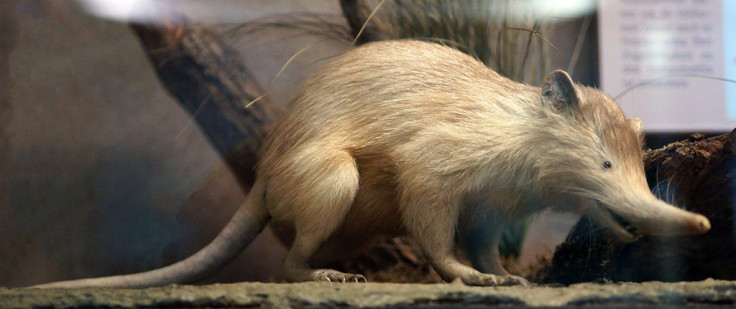Study Sheds Light On How An Endangered Mammal Evolved Its Venom

Solenodon is not a name one usually hears in conversations about mammals, but the creatures are actually some of the strangest mammals in the world. Solenodons grow to about a foot long and look much like large shrews with multicolored fur and elongated snouts.
What’s even more special about solenodons is that they are actually venomous. And unlike other venomous mammals such as the duck-billed platypus, which passively convey venom, solenodons are capable of directly injecting venom just like venomous snakes do.
But how did these rare and now endangered creatures get this capability? Researchers of a new study published in PNAS sought to find out.
Kallikreins
Solenodon-like creatures lived all over North America 30 million years ago, but now the Hispaniolan solenodons can only be found on the island of Hispaniola. Fortunately, researchers still managed to get venom samples from two wild solenodons as well as blood samples from a captive solenodon at the National Zoological Park in the Dominican Republic.
They then analyzed the data they gathered and compared it to the genome of related animals such as moles and shrew.
Upon analysis, researchers discovered the presence of a set of enzymes called kallikreins in solenodon venom. These enzymes break down other proteins, including those that maintain blood pressure. And when researchers injected mice with solenodon venom, they observed a drop in the creature’s blood pressure.
This could mean that solenodons use their venom to lower the blood pressure of their prey, thereby turning them into easier prey.
Distant Relatives
Interestingly, researchers also found kallikreins in the venom of one of the solenodons’ relatives, the northern short-tailed shrew. However, researchers deem it unlikely that they inherited it from the same distant relatives because that would mean that a majority of their relatives lost it and only they retained it.
As such, it is more likely for the shrews and solenodons to have separately developed the trait after they diverged from the branch in the family tree, especially since they don’t all use the exact same kallikrein enzymes in their venom. According to researchers, it is more possible that the overlap in enzymes shows the limited options they had to develop the venom.
Solenodon Venom
The question now is whether solenodons still use their venom regularly to capture prey or if it is merely a remnant of an ecosystem that they used to be a part of. In the last 500 years, many of their prey have gone extinct in their homes, leaving them only with insect prey that are not affected by venom.
As such, the authors hope that future observations on wild solenodons’ hunting activity will shed some light on the matter.
“This study highlights how little we know about one of the world's most fascinating animals,” study co-lead investigator Professor Samuel Turvey of Zoological Society of London said. “Unravelling details of the solenodon's previously unstudied venom system helps us to understand the mechanisms behind convergent evolution - and demonstrates the importance of conserving the world's remarkable EDGE (Evolutionarily Distinct and Globally Endangered) species.”
© Copyright IBTimes 2024. All rights reserved.






















